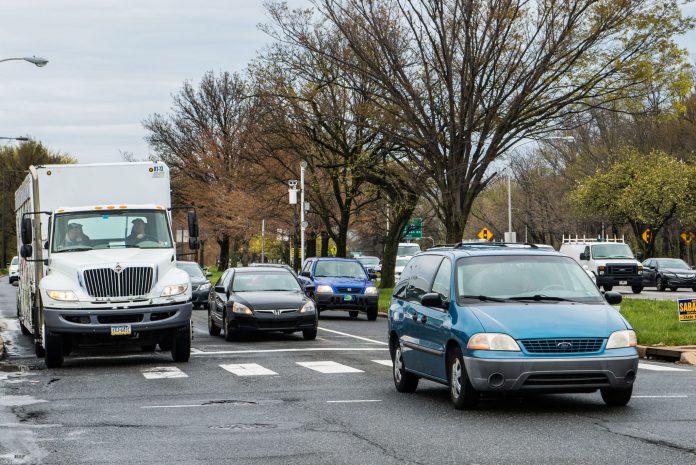By Chris Bordelon
I recently attended a public meeting about the “Route for Change” project, the slogan of which is “Transforming the Boulevard.”
Northeast residents were invited. But city officials didn’t host the meeting to ask our opinions. They propose to “transform” Roosevelt Boulevard, according to their own ill-conceived plans, regardless of whether people who use the Boulevard like it or not.
In April, residents were asked for comment on preliminary Route for Change plans. But the city never published the comments or its responses to them. Perhaps too many comments criticized the initial plans, and the plans’ authors preferred to ignore the criticism.
The Boulevard could be improved, but overall, the plans the city presented at recent meetings would probably hurt most Boulevard users. Some proposed “interim” improvements could have been conceived only by people who don’t regularly experience the Boulevard. The worst is a plan for bicycle traffic to share Boulevard lanes with automobile traffic. That’s practically an encouragement to suicide for cyclists, and would put motorists unnecessarily at risk, too.
Another interim plan will bar cars from a lane in each direction. This so-called “BAT” lane would be open only to buses. City officials claim that this will relieve congestion. But unless many more people quickly choose to ride buses, the likelier result will be worse congestion for most Boulevard commuters, who use private vehicles.
Long-term alternatives presented at the meeting were more drastic. Two or three lanes in each direction would be closed to private motor vehicles or eliminated. Many new intersections with smaller roads might be created, necessitating more stops. Some remaining lanes might be sent through underground tunnels. A rail line might replace buses. City officials will apparently decide these things and let us know. Construction would continue for years, probably a decade or more.
Little thought seemed to have been given to the project’s effect on Northeast neighborhoods during construction. Brief Boulevard lane restrictions due to accidents and repairs make getting around the Northeast difficult. But if construction deliberately snarled traffic for years and was expected to worsen driving conditions when completed, frustrated local residents and businesses might move away.
A city official at the meeting explained that eliminating lanes would presumably cause no problems for two reasons. First, the millennial generation, the official said, doesn’t like to use cars, so the future Boulevard would carry fewer cars. Second, autonomous, driverless cars would solve traffic congestion problems.
These assumptions appear dubious. Even if millennials don’t now like to use cars — a questionable claim — the notion that millennials won’t want cars as they age, or that Northeast residents won’t want cars, goes beyond what city officials can validly claim to know. No one can say what impact driverless cars will have on the Boulevard, or when, if ever, it will occur. Little real-world data relevant to the Boulevard exists to support sweeping claims about driverless vehicles.
Elsewhere in the Northeast, traffic is projected to increase. The Far Northeast Districts Plan adopted by the Planning Commission last year assumed that it would. Does the city claim that millennials and driverless cars will cut traffic on the Boulevard but not elsewhere?
City officials may be pushing Route for Change specifically to hurt people who drive cars. Opposition to private cars as a mode of transportation is the main theme of “Connect: Philadelphia’s Strategic Transportation Plan,” a city policy paper released in October 2018. In the name of “transportation equity,” a vague concept used to justify every policy it proposes, “Connect” purports to link private vehicles to various social evils. It claims that disadvantaging motorists to promote other forms of transportation will produce “equity” along racial, economic and other lines. “Connect” suggests making it harder and costlier to use private vehicles, effectively punishing people for driving.
One can agree or disagree with the ideology underlying “Connect.” But its implications are alarming for the Northeast, which was planned especially for people with cars. The Boulevard is central to its transportation network. Implementing Route for Change would hinder the most common type of traffic on our most important road, making it harder to live in the Northeast. The plan unfairly presents the pattern of people’s lives in the Northeast as a problem to be solved. The government shouldn’t treat us like that.
A lengthy project generating lucrative contracts to reward politically connected contractors might appeal to some politicians. But it would be a shame to see the Northeast hurt by Route for Change to benefit campaign contributors. Everyone should check out the city’s transportation plans for the Boulevard and elsewhere and demand elected officials’ opinions. ••
Chris Bordelon is president of the Somerton Civic Association.






Immediate relief could be achieved by aggressive enforcement of existing traffic laws including speeding, reckless and careless driving. Live stop vehicle seizures should be effected as often as possible…
Lefties Attack the NE-bastion.
I agree with the writer of this column. The boulevard is not a problem — many of the drivers who use it are.
I drive it twice a day, and have been using it for 40 years.
They are going to install speed cameras with $150.fines after having red light cameras for more than a decade. Reserving lanes for buses and bicycles is only going to worsen the traffic and cause people and businesses to leave the city if they lose customers. I won’t use the boulevard if I am going ringer nickeled and dimed to death by socialists in the Kenny Administration.
Well, it’s pretty clear the goal is to maximize public transportation into the Northeast. It is not easy to commute to or from the Northeast without a car so having a faster, more prolific public transportation method will greatly encourage migration to the Northeast from the city’s other sections to aid in gaining diversity.